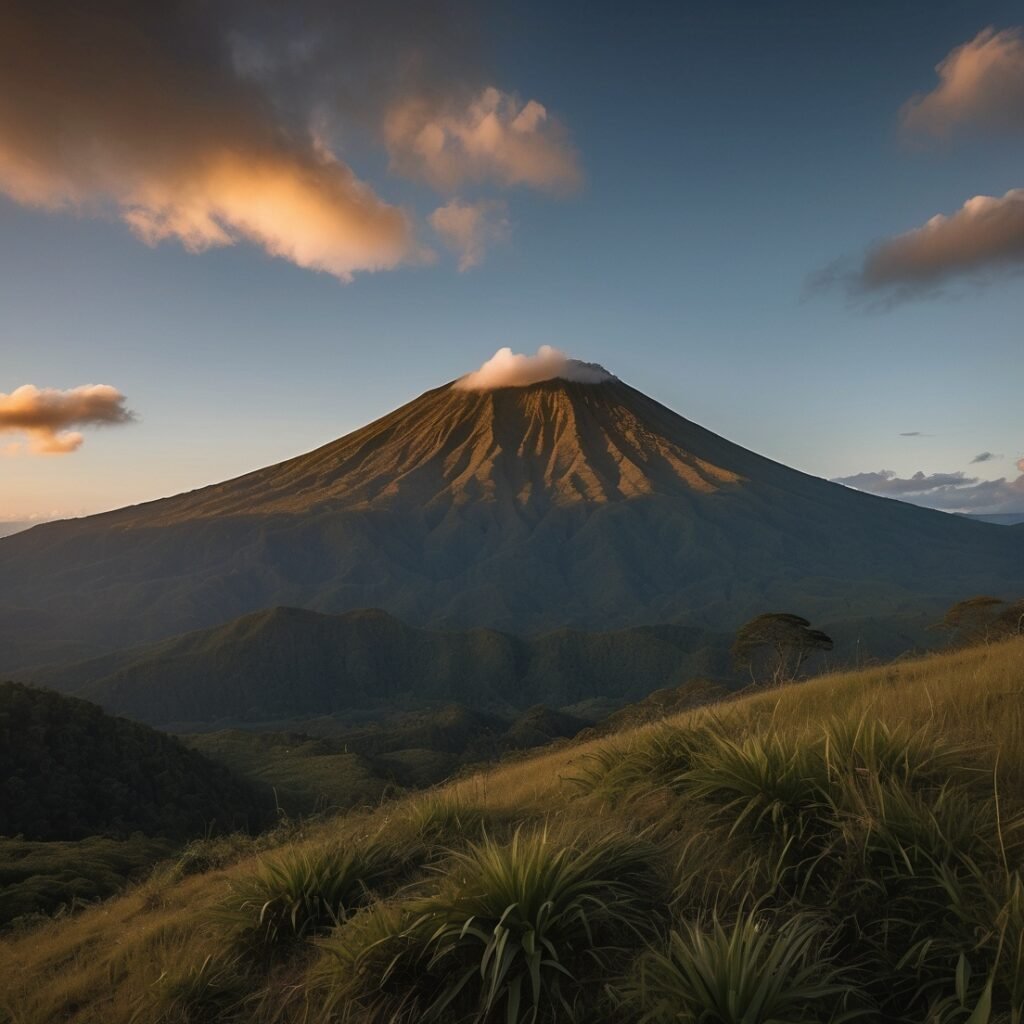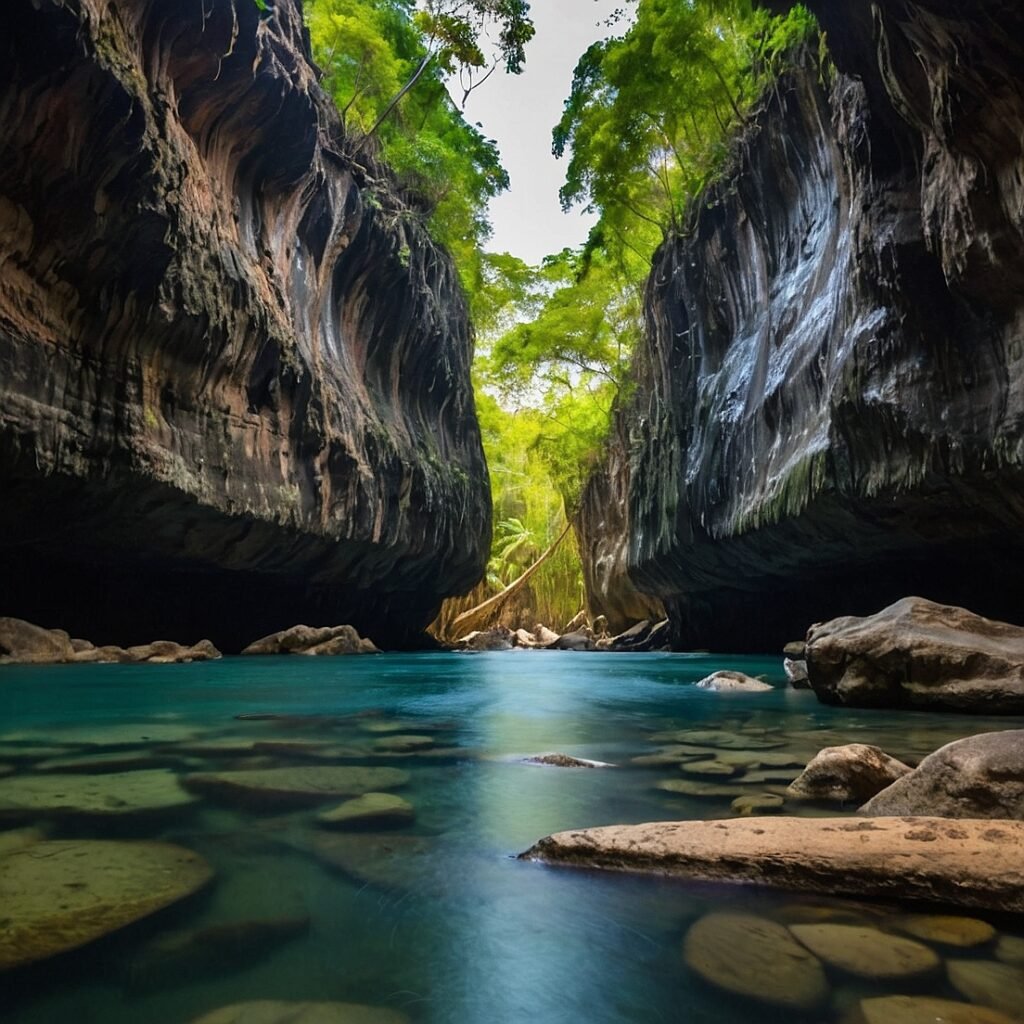Have you ever dreamed of standing on top of the world? Well, in the Philippines, that dream comes pretty close to reality when you conquer Mount Apo. As the highest peak in the country, Mount Apo isn’t just a mountain – it’s a testament to the raw beauty and power of nature that the Philippines has to offer. Standing tall at 2,954 meters (9,692 feet) above sea level, this majestic giant has captured the imagination of adventurers, nature lovers, and locals alike for centuries. But what makes Mount Apo so special? Why should it be on your bucket list? And what can you expect when you decide to take on this incredible challenge? Buckle up, fellow explorers, because we’re about to embark on a virtual journey to the roof of the Philippines!
The Geological Marvel: A Volcano with a Story to Tell
A Sleeping Giant with a Fiery Past
Let’s kick things off with a bit of geology, shall we? Mount Apo isn’t just any ordinary mountain – it’s a stratovolcano with a fascinating history. Now, before you start worrying about lava flows and eruptions, take a deep breath. Mount Apo is considered potentially active, but it hasn’t erupted in recorded history. The last time it showed any significant activity was way back in 1640, which is practically ancient history in geological terms. But don’t let its current slumber fool you – this mountain has a fiery past that has shaped the incredible landscape we see today.
The volcanic nature of Mount Apo is evident in its rugged terrain, steep slopes, and the presence of geothermal features. As you climb, you’ll encounter everything from lush forests to rocky outcrops, each telling a part of the mountain’s long and eventful life story. And let’s not forget the breathtaking views – on a clear day, you can see for miles in every direction, a reminder of just how high you’ve climbed and how small we really are in the grand scheme of things.
The Biodiversity Hotspot: A Haven for Flora and Fauna
A Living Museum of Nature’s Wonders
Now, let’s talk about what really makes Mount Apo a true gem – its incredible biodiversity. This mountain isn’t just a pile of rocks; it’s a thriving ecosystem that’s home to an astonishing variety of plant and animal species, many of which are found nowhere else on Earth. As you ascend through different elevation zones, you’ll witness a changing tapestry of life, each adapted to its unique environment.
Starting at the base, you’ll find yourself surrounded by lush tropical rainforests, teeming with life. Keep your eyes peeled for colorful birds flitting through the canopy, including the critically endangered Philippine Eagle, which calls Mount Apo home. As you climb higher, the vegetation changes, transitioning to mossy forests draped in ethereal mists. Here, you might spot orchids clinging to tree trunks or hear the haunting call of the Apo Myna, a bird species endemic to the mountain.
But the biodiversity doesn’t stop there. Mount Apo is also home to various mammals, including the Philippine deer, wild pigs, and several species of bats. And let’s not forget the countless insects, reptiles, and amphibians that contribute to this complex and delicate ecosystem. It’s like stepping into a living, breathing nature documentary – except you’re right in the middle of the action!
The Cultural Significance: A Sacred Mountain with Deep Roots
A Mountain Steeped in Legend and Tradition
Mount Apo isn’t just a natural wonder; it’s also a place of profound cultural significance for the indigenous peoples of Mindanao. The name “Apo” itself means “grandfather” or “ancestor” in Filipino languages, hinting at the reverence with which the mountain is regarded. For centuries, various indigenous groups, including the Manobos, Bagobo, Ubos, Atas, K’Iagans and Tagacaolo, have considered Mount Apo sacred ground.
These communities have woven rich tapestries of myths and legends around the mountain. Some believe it to be the dwelling place of powerful spirits or deities. Others see it as a source of life and sustenance, with its forests and rivers providing food, medicine, and materials for generations. The mountain has played a central role in traditional ceremonies and rituals, serving as a place of pilgrimage and spiritual renewal.
Understanding this cultural context adds a whole new dimension to the Mount Apo experience. As you climb, you’re not just conquering a physical challenge – you’re walking in the footsteps of countless generations who have revered and protected this mountain. It’s a humbling reminder of our connection to the land and the importance of respecting and preserving these sacred spaces for future generations.
The Climbing Experience: Challenges and Rewards
Preparing for the Adventure of a Lifetime
So, you’re feeling inspired and ready to take on Mount Apo? Fantastic! But before you lace up your hiking boots, let’s talk about what you can expect from this challenging but incredibly rewarding climb. First things first – this isn’t a walk in the park. Climbing Mount Apo requires preparation, both physical and mental. You’ll need to be in good shape, as the trek can take anywhere from two to four days, depending on your route and pace.
There are several trails to choose from, each offering a unique experience. The Kidapawan-Magpet trail is popular for its diverse landscapes, while the Kapatagan trail is known for its more gradual ascent. Whichever route you choose, you’ll be in for a treat – and a challenge. You’ll traverse through different ecosystems, from steamy lowland forests to chilly montane grasslands. Be prepared for sudden weather changes, as conditions can shift rapidly at high altitudes.
As you climb, you’ll encounter a variety of terrains. There are steep sections that will test your endurance, boulder fields that require careful navigation, and muddy patches that can be slippery after rain. But with each step, you’ll be rewarded with ever-more-stunning views and a sense of accomplishment that’s hard to beat. And when you finally reach the summit? Well, let’s just say the panoramic views and the feeling of standing on the highest point in the Philippines make every blister and aching muscle worth it.
The Summit Experience: On Top of the Philippines
A Moment of Triumph and Awe
Picture this: after days of challenging hiking, you’ve finally reached the summit of Mount Apo. As you catch your breath and take in the view, you realize you’re standing on the very roof of the Philippines. The world spreads out beneath you in a breathtaking panorama – on a clear day, you can see all the way to the islands of Bohol and Cebu in the distance. It’s a moment that stays with you forever, a perfect blend of personal triumph and natural wonder.
The summit area of Mount Apo is a unique landscape in itself. Unlike the pointed peaks you might imagine, the top of Mount Apo is relatively flat, with several interesting features to explore. There’s a small crater lake, evidence of the mountain’s volcanic nature, and fields of boulders that create an almost otherworldly atmosphere. Many climbers choose to camp near the summit, allowing them to witness unforgettable sunrises and sunsets from this lofty vantage point.
But the summit experience isn’t just about the views. It’s about the sense of accomplishment, the camaraderie with your fellow climbers, and the profound connection you feel with nature. As you stand there, surrounded by clouds and sky, it’s hard not to feel a sense of perspective – both of your own smallness in the face of such grandeur, and of the incredible strength and resilience that brought you to this point.
The Environmental Challenges: Preserving a Natural Treasure
Balancing Tourism and Conservation
With great beauty comes great responsibility, and Mount Apo is no exception. As the mountain’s popularity as a climbing destination has grown, so too have the environmental challenges it faces. Increased foot traffic can lead to trail erosion, litter accumulation, and disturbance of fragile ecosystems. It’s a delicate balance – how do we allow people to experience the wonder of Mount Apo while also protecting it for future generations?
Fortunately, efforts are underway to address these challenges. The mountain and its surrounding areas have been designated as Mount Apo Natural Park, providing a framework for conservation and sustainable management. There are restrictions on the number of climbers allowed at any given time, and guides are required to ensure safety and minimize environmental impact. Many local communities and organizations are also involved in conservation efforts, from reforestation projects to education programs.
As visitors, we all have a role to play in preserving Mount Apo. This means adhering to Leave No Trace principles – pack out what you pack in, stay on designated trails, and respect wildlife and plant life. It also means being mindful of the cultural significance of the mountain and respecting local customs and traditions. By approaching our visit with respect and responsibility, we can help ensure that Mount Apo remains a natural treasure for generations to come.
Planning Your Mount Apo Adventure: Tips and Considerations
Making Your Dream Climb a Reality
Feeling inspired to tackle Mount Apo yourself? That’s the spirit! But before you start packing your bags, there are a few important things to consider. First and foremost, timing is crucial. The best time to climb Mount Apo is during the dry season, typically from March to May. This gives you the best chance of good weather and clear views. However, even during these months, conditions can be unpredictable, so flexibility and proper preparation are key.
When it comes to logistics, it’s essential to go through official channels. You’ll need to secure permits from the Department of Environment and Natural Resources (DENR) and the local government unit. It’s also mandatory to climb with accredited guides – not only for safety reasons but also because they provide invaluable knowledge about the mountain’s ecology and cultural significance.
As for gear, be prepared for a range of conditions. You’ll need sturdy hiking boots, warm and waterproof clothing, camping equipment, and plenty of water and high-energy snacks. Don’t forget essentials like a first-aid kit, sunscreen, and insect repellent. It’s also a good idea to train for the climb, focusing on both cardiovascular fitness and strength, especially in your legs and core.
The Lasting Impact: More Than Just a Climb
A Journey of Personal Growth and Environmental Awareness
Climbing Mount Apo is more than just ticking an item off your bucket list – it’s an experience that can profoundly impact your life. Many who have made the journey speak of a newfound appreciation for nature, a deeper understanding of their own capabilities, and a shifted perspective on what’s truly important in life. There’s something about standing on that summit, looking out over the vast expanse of the Philippines, that puts things into perspective.
But the impact of your climb can extend far beyond your personal experience. By choosing to visit Mount Apo responsibly, you’re contributing to the local economy and supporting conservation efforts. Many climbing packages include fees that go directly towards maintaining trails, supporting local communities, and funding environmental programs. Your visit can help demonstrate the value of preserving natural areas, encouraging further conservation efforts.
Moreover, the lessons learned on Mount Apo – about perseverance, teamwork, and our connection to nature – can be applied to many aspects of life. You might find yourself more attuned to environmental issues, more willing to take on challenges, or simply more appreciative of the natural world around you. In this way, your Mount Apo adventure becomes not just a memory, but a catalyst for positive change in your life and potentially in the world around you.
The Call of the Mountain
As we wrap up our virtual journey to Mount Apo, I hope you’ve caught a glimpse of what makes this mountain so special. From its geological marvels and incredible biodiversity to its cultural significance and the personal challenge it presents, Mount Apo truly is a destination like no other. Whether you’re an experienced climber looking for your next conquest or a nature lover dreaming of an unforgettable adventure, Mount Apo has something to offer.
So, what are you waiting for? The highest peak in the Philippines is calling, inviting you to challenge yourself, connect with nature, and experience the awe-inspiring beauty of one of Southeast Asia’s most remarkable natural wonders. Whether you decide to take on the climb yourself or simply appreciate it from afar, one thing is certain – Mount Apo, the grandfather mountain, will continue to stand tall, inspiring and captivating all who set eyes on its majestic slopes.
Remember, the journey to the top of Mount Apo isn’t just about reaching the summit – it’s about every step along the way, every breathtaking view, every moment of connection with the natural world and with yourself. So lace up those hiking boots, take a deep breath, and get ready for the adventure of a lifetime. The roof of the Philippines is waiting for you!
Disclaimer: While every effort has been made to ensure the accuracy of the information in this blog post, conditions on Mount Apo can change rapidly. Always check with official sources and accredited guides for the most up-to-date information before planning your climb. The author and publisher cannot be held responsible for any inaccuracies or changes that may occur. If you notice any inaccuracies in this post, please report them so we can correct them promptly.




